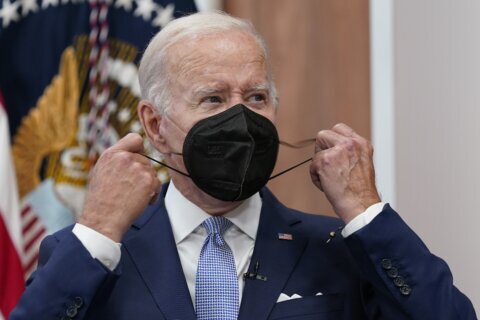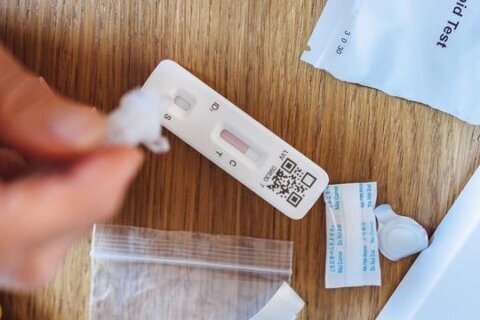The COVID-19 pandemic has been especially tough on restaurants, with indoor seating slashed and some customers still uncomfortable eating out.
For customers who want to get out but feel safe doing so, outdoor dining has been the happy medium allowing that to happen.
So, what happens when it gets colder outside?
It’s one more source of anxiety for restaurant owners like Andrew Darneille, who just opened Smokecraft Modern BBQ in Clarendon, Virginia, over the summer, which meant his restaurant wasn’t eligible for any federal bailout packages.
Right now, he’s worried about making it to the spring. “I fully expect that we’ll see a drop in business somewhere between 15 to 20% as soon as it’s too cold for the patio,” Darneille said.
- Sign up for WTOP alerts
- Latest coronavirus test results in DC, Maryland and Virginia
- Coronavirus FAQ: What you need to know
- Coronavirus resources: Get and give help in DC, Maryland and Virginia
- How can I tell the difference between the flu and COVID-19?
- US parents delaying preschool and kindergarten amid pandemic
- ‘Unfathomable’: US death toll from coronavirus hits 200,000
Looking for more information? D.C., Maryland and Virginia are each releasing more data every day. Visit their official sites here: Virginia | Maryland | D.C.
The 38 seats available for customers eating outside generate about 30% of his business right now.
Carryout and orders made through delivery apps account for another 40% — but to-go packaging costs money, and third parties such DoorDash or Uber Eats take an even bigger bite out of any revenue they generate.
“We hope guests will order takeout directly through the website [or] by calling us directly,” he said.
His restaurant is also offering dine-in discounts for customers who make takeout or delivery orders in the hopes of luring them back. There’s also hope that meal kits and holiday catering orders can also help keep things going.
“Ultimately, the guests have to be comfortable dining out, and it feels worrisome that that stack of cards is against us,” Darneille said. “We have to continue to get creative.”
Across the river in Northwest D.C., Steve Forbes, the executive chef at Proper 21 and Proper 21K, said he’s hopeful city leaders will move into Phase Three of its reopening plans.
“Phase Three would be great,” Forbes said. “We have an office building across the street from us that wants to book a happy hour. There’s 50 of them sitting in the office together, but when they get done with work, they have to separate 6 feet apart and tables of six. They don’t want to do that. They’d rather just go home.”
“There is something to be said about personal choice. There’s something to be said about easing the restrictions in a responsible way,” Forbes added. “As the cases go down, as more importantly the deaths go down, this city could ease some of the restrictions.”
He conceded that D.C. Mayor Muriel Bowser is in what he called a “lose-lose” situation, “but right now, the burden is on the small business owner, and Main Street in D.C. is going to look quite, quite different on the back end of this if we don’t make some changes very soon.”
Forbes’ group just closed a restaurant in Manhattan this month because of the pandemic. He said too many people are also “shamed” for going out when their personal circumstances might allow it.
“If anybody is going to make it out of it, we’re going to make it out of this thing,” he said. “It’s just — how long can a business lose money?”
Earlier this week, D.C. announced grant money of up to $6,000 to help restaurants in the city take on winterizing expenses that might make for a more comfortable outdoor dining experience. But neither Forbes nor Darneille said it’ll make that much of a dent for restaurants.
Even if the money bought a heater or two, the fuel needed to keep them going might cost more than the business they would help generate.
Plus, some venues might have trouble fitting in heaters along public sidewalks without violating the fire code, something Darneille said would be difficult to do at his restaurant.
“It’s probably not going to effect consumer behavior,” Forbes said. “You make a decision to go to a restaurant not based on whether they have heaters or not. That’s not typically how it works.”
He said rapid, reliable testing would be the biggest help.
“Some folks avoid going into public right now because, on next Wednesday, they want to go see their grandma and they want to bring their kids to see their grandma,” Forbes said.
More testing could also help change perceptions, which is another big impediment to recovery, he added.
“Personal choice is OK,” Forbes said. “If you’re not somebody that’s associated with folks that are either in the at-risk pool or older in age, then you should be allowed to make that choice to come out to a restaurant and maybe you can act differently as a consumer. But, right now, there’s still a little bit of shaming.”
Darnielle and Forbes both agree that perception that eating out is safe again is what’s really going to change things for the better. Until people feel safe, whether or not the government puts a restriction on how many people can be in the dining room is immaterial.
“We’re all trying to find ways to make it work,” Darneille said. “Our costs continue to rise while our sales continue to fall.”
He said he was encouraged last weekend when the temperatures took a dip toward autumn and he saw an increase in customers who sat in the restaurant’s dining room. But he knows he’s not out of the woods yet.
“Under the current restrictions, no matter what we do, none of this is survivable in the long term,” Darnielle said.








